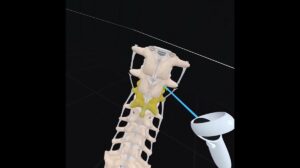NEW YORK (Reuters Health) – A new meta-analysis shows adjunctive subcutaneous omalizumab may help patients with uncontrolled allergic asthma withdraw from or cut back on corticosteroids.
Researchers also found the drug prevented asthma exacerbations and saw no increase in cardiovascular problems, despite earlier concerns raised by the U.S. Food and Drug Administration.
“Physicians should be aware of the options provided by omalizumab in properly selected patients,” said Dr. William J. Calhoun, who was not involved in the new work.
“There are probably more patients who would benefit from omalizumab than are currently receiving it,” added Dr. Calhoun, professor of internal medicine at the University of Texas Medical Branch in Galveston, in an e-mail to Reuters Health.
Omalizumab is approved for inadequately controlled allergic (IgE-mediated) asthma in adults and adolescents.
The new report, published in the January issue of Chest, is based on eight randomized placebo-controlled trials including more than 3,400 patients aged five to 79. All trials had been funded by drugmakers, and most had some risks of bias.
According to the authors, earlier reviews have looked at several different routes of administration, although omalizumab is only available for subcutaneous injection.
In all studies, patients received placebo or 0.016 mg/kg omalizumab as adjunctive therapy every two to four weeks for 12 to 28 weeks. The asthma exacerbation rate was 38 per 100 patient-years in the treatment group and 70 per 100 patient-years in the control group (number needed to treat=10; p<0.05).
Patients on omalizumab more often withdrew their corticosteroids than those on placebo (42% vs. 21%; NNT=5, p<0.05). They were also more likely to cut the use of such drugs by at least half (76% vs. 56%; NNT=5, p<0.05).
“These results were unaffected by duration of treatment, age of patients, and severity of asthma,” said lead author Dr. Gustavo J. Rodrigo, of the Hospital Central de Las Fuerzas Armadas in Montevideo, Uruguay.
In an e-mail, he added that the findings suggest “clinically worthwhile benefits.”
There were also some improvements in secondary outcomes such as use of rescue medication, peak expiratory flow and quality of life, but the researchers caution that they weren’t clinically significant.
Of patients on omalizumab, 3.8% reported serious adverse events as compared to 5.3% on placebo (p=0.14). There were more suspected treatment-related adverse events in the omalizumab group (5.0% vs. 3.2%; number needed to harm=56, p<0.05), but these were mainly injection-sit reactions.
There were four cases of cardiovascular adverse events, all in the placebo group.
Dr. Rodrigo said omalizumab is currently approved for adolescents and adults only in the U.S., supposedly due to cardiovascular safety concerns, whereas in Europe it is approved down to six years of age.
“I think that these findings confirm asthma treatment guidelines,” he told Reuters Health, adding that the new work had not received external funding.
Dr. Calhoun said omalizumab therapy ranges between $8,000 and $16,000 per year in the U.S. and that the risk-benefit ratio was generally favorable, with a small risk of anaphylaxis.
In an editorial in Chest accompanying a case study of omalizumab in non-allergic, uncontrolled, severe asthma, he notes that it is still unclear whether omalizumab should be considered broadly for such patients.
“The broad use of this expensive therapy in patients not shown to have benefit cannot be recommended,” he writes with Dr. K. Deepa Bhat, also of the University of Texas Medical Branch.
Reference:
Efficacy and Safety of Subcutaneous Omalizumab vs Placebo as Add-on Therapy to Corticosteroids for Children and Adults With Asthma
Chest 2011;139:28-35.




